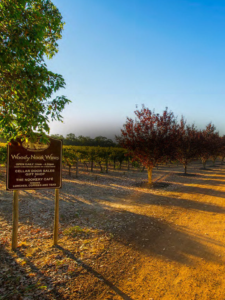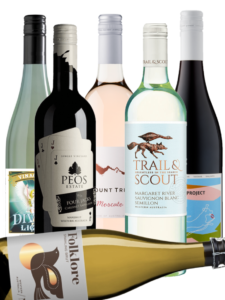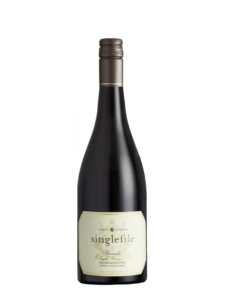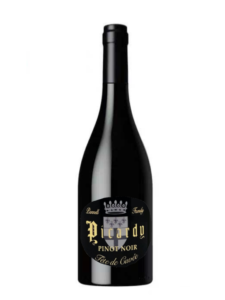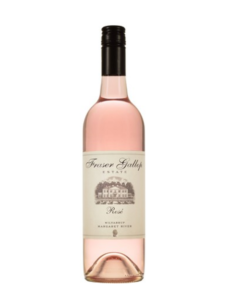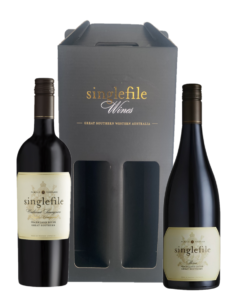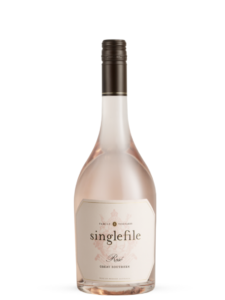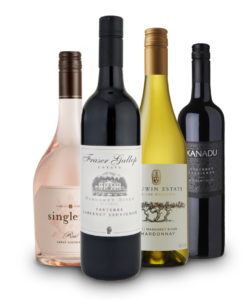Shiraz vs Syrah: One Grape, Many Expressions
Shiraz and Syrah are two names for the same grape, but they tell very different stories depending on where – and how – the wine is made. Originating in France, Syrah is known for its elegance, structure, and savoury complexity. In Australia, however, the grape found a new home and a new name: Shiraz – bold, rich, and unmistakably expressive. But in recent years, particularly in Western Australia, a shift has emerged. Cooler climates and modern winemaking are producing Syrah-style wines even if the label still says Shiraz. So what’s the difference – and what should you expect when tasting a bottle?
Origins: The French Benchmark
The grape known as Syrah hails from the northern Rhône Valley in France, where it produces some of the world’s most revered and age-worthy wines. Think Hermitage, Côte-Rôtie, and Cornas – wines defined by black fruit, olive tapenade, pepper spice, and a savoury, often meaty depth. In France, the Syrah style is generally more restrained, focusing on structure, tannin, and earthy complexity. The cooler climate and leaner soils of the Rhône region result in wines with finesse over power – though still with impressive longevity.
Australia’s Interpretation:
Shiraz Takes Centre Stage
When Syrah made its way to Australia in the 19th century, it quickly adapted to the warmer, drier climates – particularly in regions like the Barossa Valley & McLaren Vale. Here, the grape was reborn as Shiraz and took on a new personality: full-bodied, plush, ripe, and fruit-forward.
-
Barossa Shiraz is the archetype: expect rich notes of plum, blackberry jam, chocolate, vanilla, and sweet spice. Oak is often more pronounced, and alcohol levels tend to run higher.
-
Shiraz in Australia is often about power, generosity, and drinkability, while still allowing for regional nuance.
But not all Shiraz in Australia follows this warm-climate template. In regions like Yarra Valley, Canberra District, and parts of Western Australia, cooler conditions are shaping a return to the grape’s original, more elegant style – which leads us back to Syrah.
Western Australia:
Where Shiraz Becomes Syrah (Even If It Says Shiraz)
In Western Australia, especially in regions like Great Southern and Margaret River, the cooler growing conditions naturally lend themselves to Syrah-style expressions of the grape with higher acidity and lower sugar levels at picking.
Great Southern: A Natural Fit for Syrah
The Great Southern is one of the coolest and most isolated wine regions in Australia. Subregions like Frankland River, Mount Barker, and Porongurup produce Shiraz that is often medium-bodied, spicy, savoury, and remarkably refined – more in line with Rhône Syrah than Barossa Shiraz. These wines show white pepper, savoury herbs, red and black berries, and often a touch of earth or graphite.
Many winemakers in Great Southern are deliberately aiming for a cool-climate Syrah profile. However, they often still label it as Shiraz, partly due to consumer familiarity. Yet in style, the difference is clear.
Margaret River: A Mix of Styles
Margaret River, though not as cool as Great Southern, still benefits from ocean breezes and a moderate maritime climate. Shiraz here can vary: some producers craft richer, plummy styles closer to a soft Barossa feel, while others lean into a fresher, more lifted profile with fine tannins, bright acidity, and spice over sweetness. Certain producers are now deliberately labelling their wines as Syrah to reflect a more restrained, Rhône-like expression.
That said, Margaret River Shiraz can sometimes show “green” or “sour” notes if picked early or if the vintage doesn’t allow full ripening. This has led to more careful site selection and clonal choice for Shiraz in the region.
Shiraz vs Syrah: Style vs Name
So, is the difference really about the name or the style?
-
Shiraz typically refers to riper, fruit-forward, full-bodied wines, often from warmer regions.
-
Syrah usually signals a cool-climate, structured, spicy wine with savoury edges and more restraint.
But here’s the kicker: in Australia, the name Shiraz is still widely used even when the wine is stylistically a Syrah. This is especially true in Western Australia, where wines may have all the hallmarks of a French Syrah but carry the more familiar Shiraz name on the label.
This has as much to do with branding and consumer expectations as it does with winemaking philosophy. Shiraz is a name that sells – especially in Australia – so many wineries choose to stick with it even when their wine tastes nothing like a Barossa blockbuster.
Why This Matters for Wine Lovers
For drinkers seeking nuance, spice, freshness, and food-friendly structure, the cool-climate styles of WA Shiraz (or Syrah) are well worth exploring. These wines offer a contrast to the denser, sweeter style that dominated Australian exports for years. They often age beautifully, pairing well with roasted meats, grilled vegetables, and even game or duck.
For those who love power, richness, and decadent flavour, warm-climate Shiraz Georgraphe and the Swan Valley remains a benchmark – bold, generous, and deeply Australian.
Vintage & Region
While Syrah and Shiraz refer to the same grape, climate plays a defining role in the style that emerges – and in any given year, the line between them can shift.
In cooler regions like Great Southern, a warmer-than-average vintage can push Syrah-like wines into riper ‘Shiraz’ territory. Higher temperatures promote faster sugar accumulation, leading to richer fruit, higher alcohol, and potentially lower natural acidity if not managed carefully. What might normally be a spicy, elegant Syrah becomes fuller and more Shiraz-like in body and flavour profile.
Conversely, in warmer regions like Swan Valley or Geographe, a cooler vintage can preserve acidity, slow ripening, and allow for more floral, spicy, and savoury notes to develop – hallmarks of a Syrah style. These vintages may offer greater freshness and balance, with finer tannins and less overt jamminess.
Swan Valley, with its hot inland conditions, typically produces bold, ripe Shiraz with low acidity and plush texture. In cooler years, however, it can show surprising finesse. Geographe, being slightly milder and coastal, offers more variation. Warmer vintages drive opulence; cooler years enhance structure, pepper spice, and lifted aromatics.
Ultimately, vintage weather shifts the balance between sugar and acidity, impacting whether a wine leans Syrah or Shiraz – regardless of what’s on the label.
Final Thoughts: WA Leading the Shift
As Western Australia continues to build its reputation for elegance, balance, and terroir-driven wines, the Syrah-style Shiraz is becoming more prominent. Whether labelled Shiraz or Syrah, the cooler climate, thoughtful winemaking, and diverse subregions of WA are producing some of the country’s most exciting expressions of this noble grape.
So next time you pick up a WA Shiraz – especially from Great Southern or a restrained Margaret River producer – you might just be drinking a Syrah in disguise.

